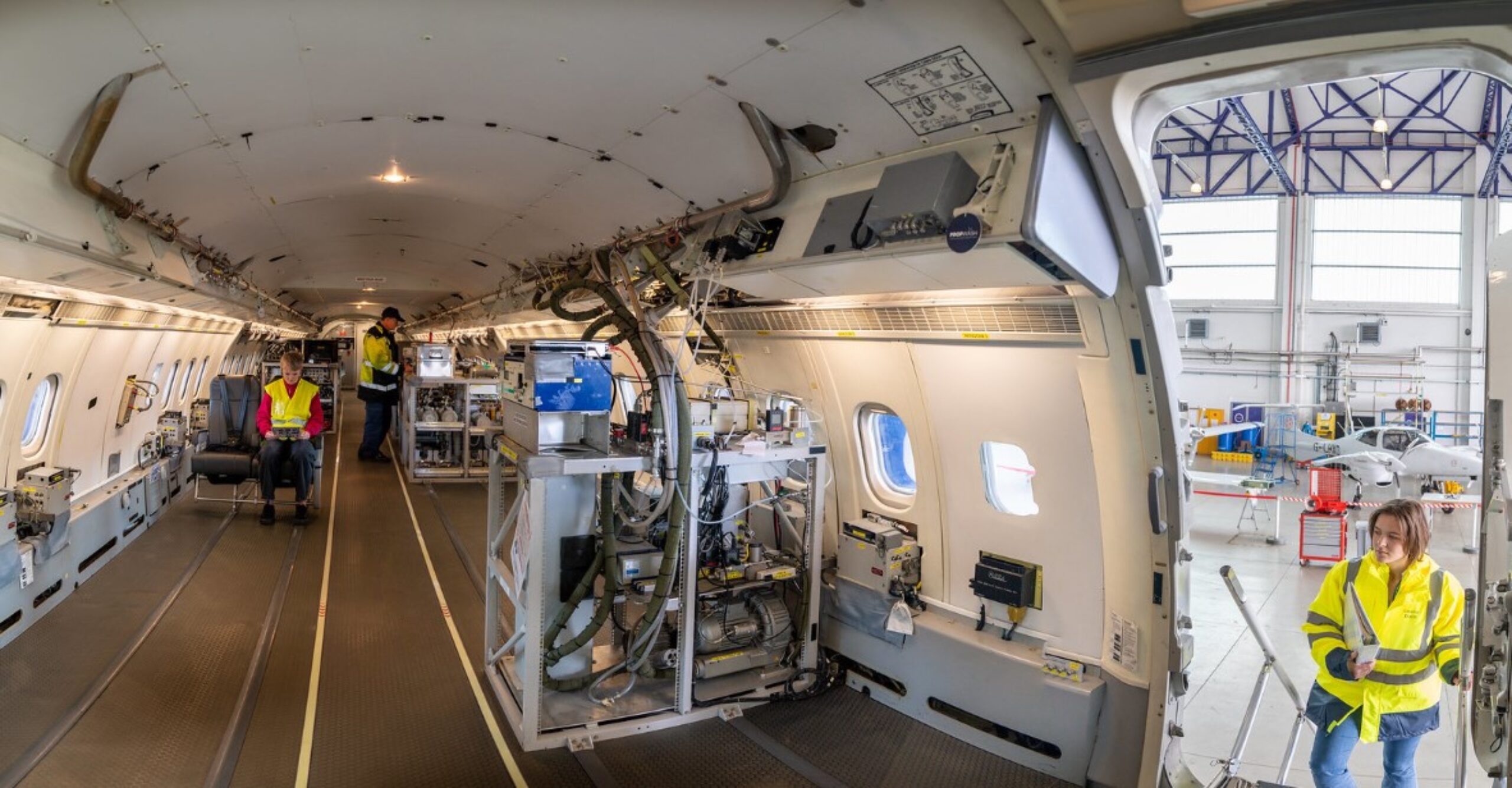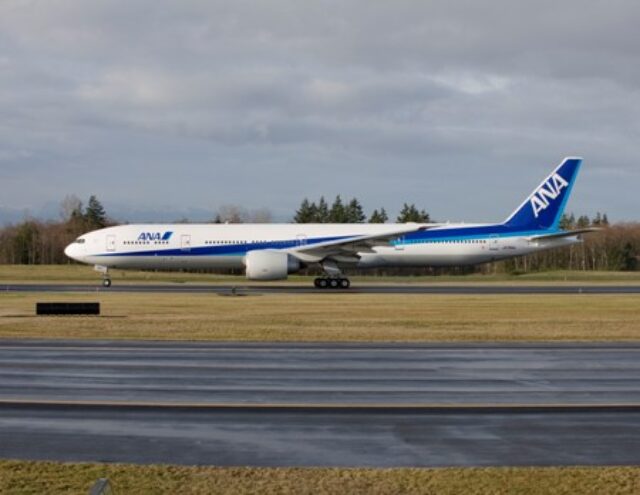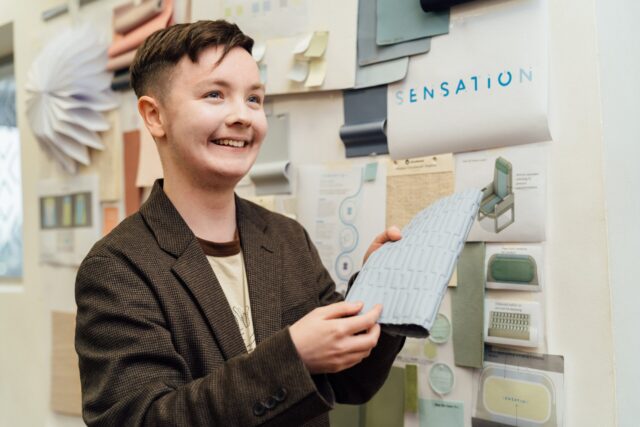Supporting science in the skies: the FAAM Airborne Laboratory
August 19, 2024

Take four tons of scientific equipment flying aboard a specially customised aircraft – the only one of its type in existence worldwide – and you have an invaluable research asset to support science in the skies. Whether chasing clouds or helping calibrate satellites, this unique airborne capability (primarily serving scientists working in UK universities) also provides support for UK government bodies and, occasionally, commercial organisations.
Aerospace Global News spoke to Eleanor Dixon, MLU communications officer at FAAM Airborne Laboratory, to find out more behind the project she describes as a good contender for “UK science’s best kept secret”.
“If it’s in the atmosphere, we can probably measure it”
Be it meteorology, atmospheric chemistry, cloud physics or radiation remote sensing, the FAAM Airborne Laboratory – probably the largest research aircraft in Europe in terms of payload – fulfils a unique airborne capability.
Managed by the National Centre for Atmospheric Science (one of the research centres of the Natural Environment Research Council), the “flying laboratory” is UKRI NERC funded and currently in the middle of a mid-life upgrade worth £49 million pounds. However, the scientific insights gleaned from the platform are often invaluable; owing to its unique ability to “take the laboratory into the atmosphere and take the measurements directly”. Alongside being made available to its commissioning scientists, data collected by the aircraft’s core instruments is also archived at the Centre for Environmental Data Analysis (CEDA).
Within the current context of increased environmental awareness, the FAAM Airborne Laboratory’s work has perhaps never been so important, with Dixon clarifying: “We’re an independent body. We don’t make recommendations necessarily, but what we do is provide evidence that can be used to better drive policy”.

Diverse mission profiles
Whether working with the British government to analyse volcanic ash (a crucial precursor to the safe reopening of UK airspace following the eruption in 2010) or chasing clouds, the FAAM Airborne Laboratory can be applied to a diverse range of mission profiles. The latter – part of a UK Met Office “Wessex convection experiment” in summer 2023 – was used to improve the accuracy of weather forecasting, revealed Dixon. “We tried to fly through the clouds as they were forming,” she highlighted, likening the process to “playing battleships in the sky”.
Another project has seen the laboratory working with space agencies to calibrate their satellites (including supporting NASA’s A-train satellite constellation); flying in formation determine the real-time accuracy of the weather the satellite is registering. Over the next year the team also hopes to be able to contribute to the validation of data from the recently-launched EARTHCARE satellite mission developed by ESA.
Perhaps it’s no wonder, then, that the laboratory’s three pilots are all ex-military, owing to the demanding mission profiles often entailing formation or low-level aerial work (such as flying at 100ft sustained over the sea). “We do a lot of unusual military-style flying,” explained Dixon, adding: “We’re probably one of the only ways you get to experience this kind of work without joining the military”.
Once a testbed, always a testbed
The aircraft that serves as this unique research platform is the first-of-series British Aerospace 146, a test aircraft then and now. After making its maiden flight in 1981, it was lengthened in 1987 to become the inaugural BAe 146-300 variant before its subsequent conversion (carried out between 2001-2004) to atmospheric research platform. With its own type certificate, the resulting aircraft – the BAe 146-301 – is the only one of its kind in existence.
With the BAe 146-300 chosen for its payload capacity, high wing design and elevated engines – perfect for “low and slow” missions – this particular low-houred airframe had already seen its fair share of anomalies its commercial siblings would not recognise, including the patching on the tail fairing (the result of earlier tail strike testing). “A lot of work during the conversion went into how it was going to fly,” explained Dixon. “We do very unusual flying for a regional airliner like this”.

Reconfigurable platform
However, having undergone its initial conversion some two decades ago, the FAAM Airborne Laboratory is by no means a static entity – rather, an eminently reconfigurable platform depending on the research community’s requirements.
Having applied for funding grants, scientists will approach us with concepts and our operations team will work to accommodate their needs, said Dixon, adding that the process can take anything from a few months to a few years depending on complexity. A project is typically in the pipeline for a year or two before a reconfiguration is realised, with the aircraft’s flying calendar planned out a year in advance.
Alongside utilising existing cameras, LIDAR windows or dropsonde capabilities, the team’s engineers will often work with scientists to certify new instruments for flight, or build from scratch if need be. “We do have a process for a project requesting to make an adaptation to the fuselage,” elaborates Dixon.
Alongside individual research project’s requirements, the platform is also undergoing a major series of mid-life updates and upgrades as part of a £49 million UK Research and Innovation investment. Started in 2021 and due for completion in 2027, this will further the UK’s research capability and extend the aircraft’s ability to fulfil new and existing research requirements. With the aircraft only flying 400 hours a year, the mid-life upgrades will continue to ensure it will still be going strong by 2040 – making it not only the first Bae146 to ever fly, but most likely the last, too. Stay tuned!
Images courtesy of the National Centre for Atmospheric Science
















